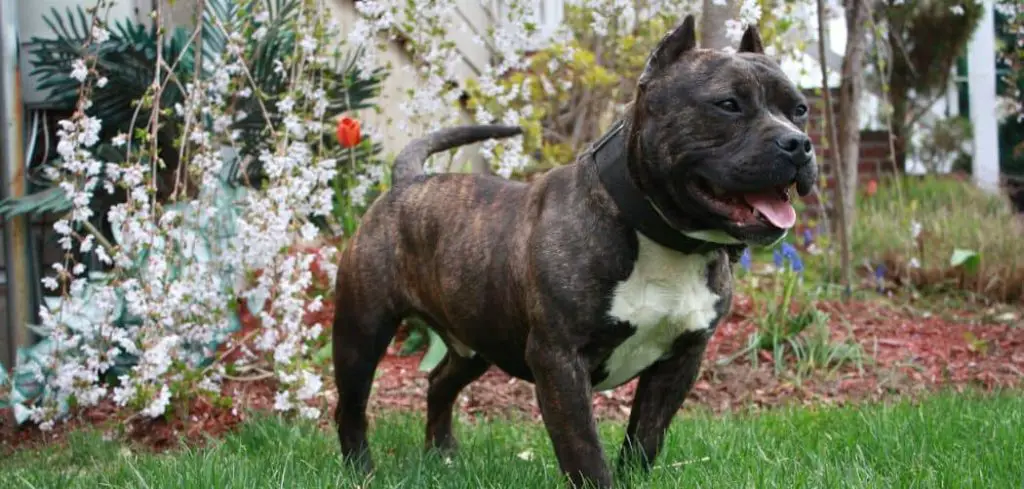It can be worrying to see your dog panting and whining after a walk. While some panting after exercise is normal, excessive or distressed panting combined with whining may signal discomfort or an underlying health issue.
We outline the most common reasons why dog pant and whine after a walk, what you can do at home, and when to seek veterinary help.
Dog Panting and Whining After Walk — Why It Happens
A dog panting and whining after a walk can stem from physical exertion, heat, injury, or an underlying health condition. Dogs pant naturally to cool down, but if the behavior is more intense than usual, or if whining accompanies it, your dog may be experiencing pain, overheating, anxiety, or difficulty breathing.
This combination of symptoms can appear in both healthy and unwell dogs, but persistent or severe episodes are a sign to investigate further.

Common Causes of Dog Panting and Whining After Walk
Overheating or Heatstroke
When dogs become too hot, they pant heavily to release excess heat. After a walk—especially in warm weather—this panting can be accompanied by whining as your dog feels uncomfortable or distressed.
Overheating can escalate to heatstroke, a dangerous condition that requires immediate attention.
Signs include bright red gums, drooling, rapid breathing, and collapse.
This is particularly risky for brachycephalic breeds, older dogs, or those with existing health issues.
Read more: Dog Panting and Drooling After Walk (Here’s why)
Muscle Strain or Injury
A pulled muscle, joint sprain, or paw injury can cause pain after exercise.
Panting often occurs as a stress response, while whining is a vocal expression of discomfort.
You might notice your dog limping, licking a paw, or avoiding putting weight on one leg.
Even if they seemed fine during the walk, injuries can become more apparent once they rest.
Heart or Lung Problems
Cardiac or respiratory conditions can make it difficult for your dog to get enough oxygen during physical activity.
After a walk, your dog may pant excessively as they try to catch their breath, and whining may reflect their distress.
Conditions like congestive heart failure, tracheal collapse, or chronic bronchitis can cause exercise intolerance.
Dogs with these issues may also cough, tire quickly, or have bluish gums.
Anxiety or Stress
Some dogs become anxious after a stimulating or overwhelming walk—especially if they encountered loud noises, unfamiliar dogs, or busy streets.
Panting can be a physiological sign of stress, while whining communicates unease.
Anxious dogs may pace, stick close to their owner, or show other nervous behaviors.
While mild anxiety may resolve on its own, repeated episodes warrant evaluation.
Pain from Chronic Conditions
Dogs with arthritis, hip dysplasia, or other long-term joint issues may struggle after physical activity.
The combination of panting and whining can indicate that the walk has triggered discomfort.
These dogs may also be slower to get up after resting, reluctant to climb stairs, or stiff in the mornings.
Low Blood Sugar
In rare cases, dogs can experience hypoglycemia after exercise, especially smaller breeds or those with metabolic conditions.
Low blood sugar can cause weakness, shaking, panting, and vocalizing.
This can be a medical emergency if severe, so quick recognition is important.
What to Do If Your Dog Is Panting and Whining After Walk
First, ensure your dog has access to fresh, cool water and a shaded or air-conditioned space to rest.
If the weather was warm, help them cool down gradually—never with ice-cold water, as sudden changes can cause shock.
Check for visible injuries, sore spots, or anything lodged in their paws.
If your dog appears in pain, keep them calm and limit movement until you can speak with a vet.
For dogs with anxiety, provide a quiet, safe space after the walk and consider shorter, less stimulating routes in the future.
Monitor your dog closely over the next few hours. If symptoms persist, worsen, or appear severe from the start, it’s safest to seek veterinary advice.
When to Call or Visit Your Vet
Contact your veterinarian immediately if your dog’s panting and whining is accompanied by signs like collapse, severe weakness, vomiting, pale or blue gums, or extreme lethargy.
Rapid breathing that does not settle within 15–20 minutes after rest, or any signs of heatstroke, require urgent care.
If your dog regularly struggles after walks, even in mild weather, schedule a check-up to rule out heart, lung, or orthopedic issues.
Read more: Dog panting excessively (Should you worry?)
Key Takeaway
Panting and whining after a walk can be a normal recovery response, but when it’s excessive, persistent, or accompanied by other symptoms, it’s a warning sign that something may be wrong.
By observing your dog closely, making adjustments to exercise routines, and seeking timely veterinary guidance, you can help ensure their walks remain safe and enjoyable.
